Interface
To tell anyone you have a sound system, you have to start from the head unit (now… better known as an INFOTAINMENT system).
Quick History
In the past, roughly 10-20 years ago or the newer base-model cars we didn’t have screens, and if we did it wasn’t for watching videos or playing Angry Birds, it was for information about the car and in some cars you could adjust preferences of the car’s overall interface such as: automatic door locking, follow you home lights etc.
Music videos in your car was only for show-cars until the major head unit manufacturers like PIONEER, KENWOOD, ALPINE started making head units with screens on them, they could play DVDs and even had video-in and our RCA cables. Of course then the roadster owners complained, “hey we only have SINGLE DIN slots in our cars, what about us?”. Then came the flip-out TV head units and it all shot off from there.
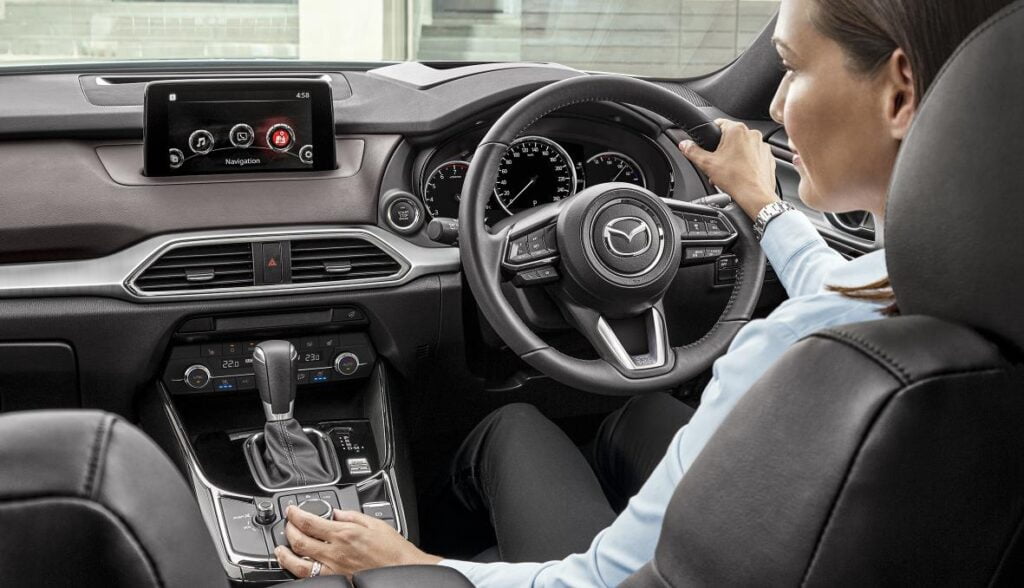
Special Features – Car Specific Designs
With a head unit / infotainment system you want to buy one specifically made for your car, as most of the newer model cars do have some sort of bezel that makes the DIN slot shape a little unique. When you buy a car-specific head unit you’ll find it comes with all the necessary bezels and other equipment to get it to fit in your dash. The next benefit is of course the OBD / CANBUS modules that the head unit might come with, that would allow communication with the car’s ECU. Your head unit will be able to control a number of things like auto-locking, customize the steering-wheel controls, boot locks, child-locks etc. In some cars you can even adjust the driving-mode from the head unit.
When you look at the wiring harness for the head unit it’ll give you an idea of the capabilities, there are head units out there that are able to control your laser jammers, GPS lowjacks, parking sensors etc. You’ll see wiring for cameras. We highly recommend getting one that has DVR for your dashcam and car-security.
Output – Power & Features
While the power output of a head unit is often subpar, what you do need to check is the OHM of your speakers. For instance if your car has a stock BOSE system putting a head unit that’s 1-2ohm will significantly decrease the quality of your audio; as BOSE systems are all 0ohm. Most head units are a standard 50w but brands do vary in terms of ‘gain’ which can effect the volume but not so much the quality.
RCA outs are important! The more the merrier! If you have 3 sets of RCA outs you’ll be able to individually control all 4 speakers along with a subwoofer. If you have 2 sets, then you’re stuck with speakers + sub etc. If your head unit only appears to have one RCA out it can still run everything but it will be physically controlled rather than digitally.
What to look for in a head unit (Short version)
- RCA out (more the better)
- Android OS (the most customizable + addable features)
- DVR Capable
- Car Specific Bezel / CANBUS modules
- Processing power (higher the Ghz the better)
Speakers
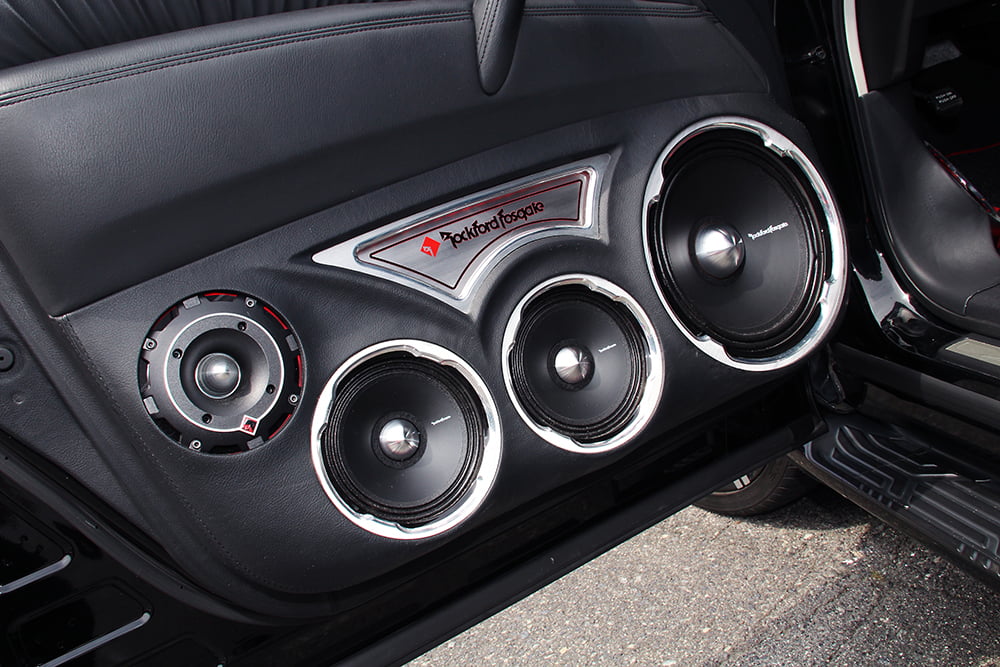
Coaxial speakers are the simplest but component speakers are where the quality is at. With speakers unfortunately it usually a matter of price, the more it costs the better it usually is. However in some cases money is no the defining factor, maybe you have a roadster and have no room for a subwoofer? Maybe your car has tiny little speaker holes etc. So let’s educate ourselves really quick…
When you hear things like 2-way or 3-way again the more the merrier, 2 way means tweeter + mid-low driver / 3-way means tweeter + mid driver + low driver. Tweeters produce high-pitched sounds (treble), the mid is the clips and claps and the low is the bass.
If you are planning on adding a subwoofer into your sound system you probably don’t need a speaker with a huge magnet on the back to produce bass, as 90% of the bass will be coming from the subwoofer, and the speakers will only be there for mids and highs. Mids are often overlooked but they are in-reality what produce the music so the quality of the mid-driver is important.
The biggest mistake most car audio noobs make is to invest heavily in a subwoofer, and minimal in the speakers. In reality you should be working the other way-round. Better speakers, with a weak little sub to just back up the low notes will give you much better overall sound quality + performance.
Power Output
The maximum or peak wattage power is pointless, what you look for in a speaker is the RMS. In this case higher the RMS does mean better… but it also means you need the POWER to run it.
If you’re planning on running the speakers off the head unit without an amplifier than you do not want high RMS (at best 40W RMS). When you’re running an amplifier you will have to pick a speaker based on the RMS of the amplifier too. We also recommend going for known-brands (with reviews online etc.) to ensure the RMS rating is also accurate.
What to look for in speakers (Short version)
- High RMS speaker for amplified sound systems
- 40w (or less) RMS speaker if running off head unit
- Component speakers if you have the money
- 3-way coaxial if you are on a budget
- 6x9s produce better bass
- Bigger the magnet, more the bass
- Brand-name
Amplifier
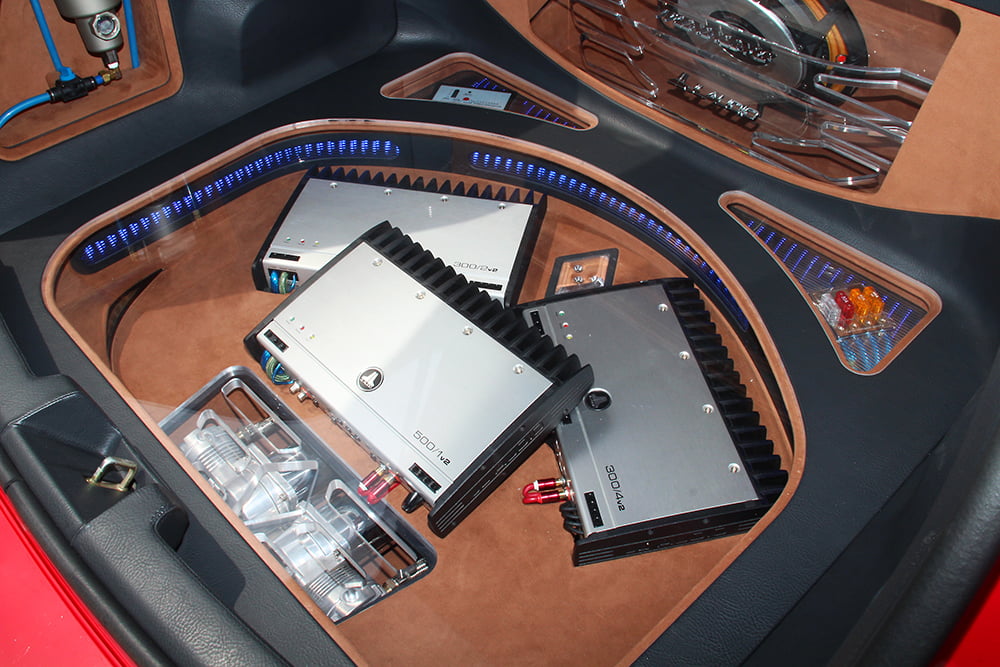
Similar to speakers power output is everything here, RMS is the true wattage and that’s what you want to be looking at but on a per channel basis. A channel is basically ONE positive and negative terminal which should run ONE component of your system ie. a speaker or a subwoofer. Again try to aim for a brand-name amp so you end up with actual RMS.
A 4 channel amplifier usually splits controls into 2 this way you can run 1 subwoofer off of 2 channels for extra power, and choose which speakers to run off the remaining 2 channels. In reality you can run multiple speakers off one channel however this will of course reduce your sound quality due to the weaker power output and of course lack of location definition (front / rear speaker). If you have a 5 channel, it will have 1 channel with a low-pass filter that will only work with a subwoofer, while the other channels will be researched for each set speaker.
A high quality sound system often has 2 amplifiers installed, a 4ch to run the speakers and another 2-channel (or mono-block) to run the subwoofer. This is the more ideal setup but of course requires more wiring and costs more. Newer model subwoofers come with an in-built amplifier. Amplifiers are prone to breaking down as it is a part that receives and converts power constantly, so make sure you install the amplifier properly.
What to look for in amplifiers (Short version)
- High RMS (regardless of setup) higher the better
- 4ch for speakers
- 2ch or Monoblock for subwoofers
- Brand-name
- Get yourself a proper wiring kit (gold-plated RCA is worth the extra cash)
Subwoofer
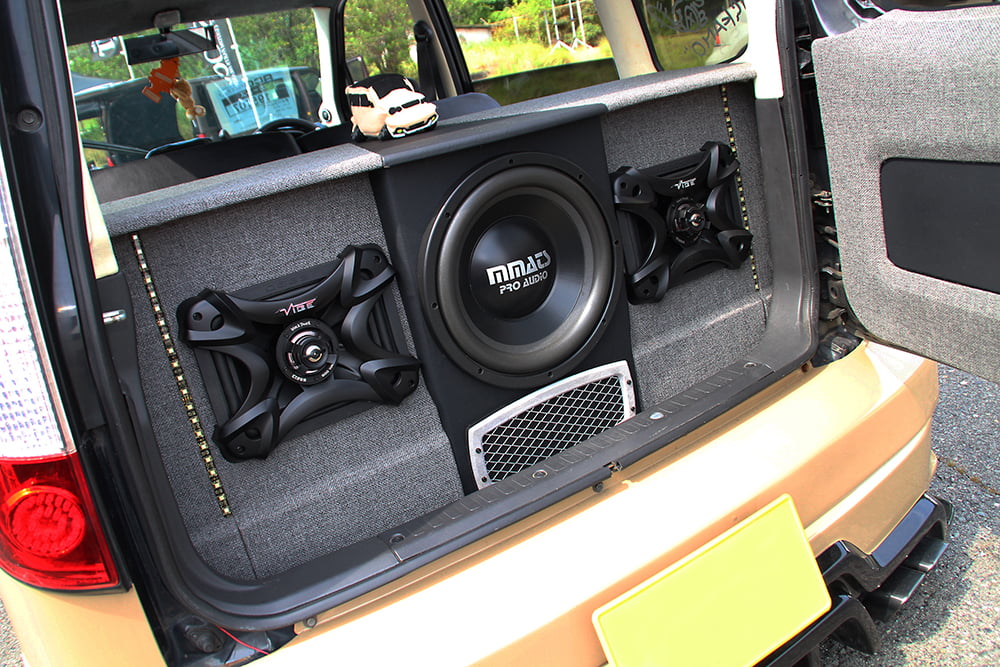
While they only produce low notes (BASS) they are a crucial component to a high quality sound system. A lot of cars with built-in sound systems actually have a subwoofer hidden away. Subwoofers (similar to speakers) also have maximum / peak watts and of course RMS ratings which are hidden away (often behind the magnet itself).
Higher the RMS, better the bass but… higher the power requirement. Try to select a subwoofer based on your amplifiers RMS as too much power can blow your subwoofer! and to little will make it pointless. If you don’t want something that’ll rattle your car we recommend not getting anything above 150w RMS.
The box of subwoofer is very important, does it have a port that can be closed off? how does it breathe? are the terminals gold plated? This all comes down to pricing, but general a larger box with a port is what you want.
What to look for in a subwoofer (Short version)
- 300W+ RMS will rattle
- 150W- RMS will fill-in the bass your speakers don’t produce
- Buy one based on your amplifiers RMS (your amplifier can blow your subwoofer instantly)
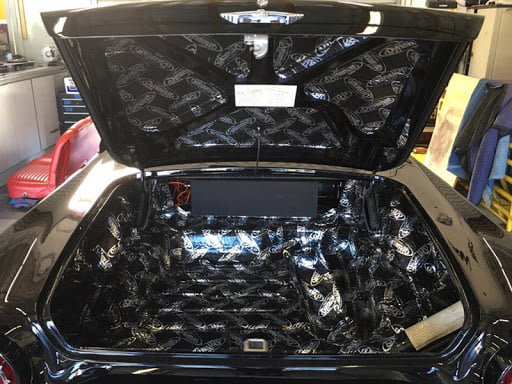
Sound Dampening
So you may be wondering why anyone would get a huge subwoofer if their care is going to be rattling all over the place? If you have the funds you can invest in sound dampening / isolation. Think of it as an anti-rattle sticker. You place these around the speakers / subwoofers, on the metal of your boot, and around the doors. Sound dampening is really heavy! If you’re looking to run light don’t buy any!
Other than preventing bass-rattle it also reduces the outside noises, think of it like the material they would use in the sound studio so sound doesn’t leave the room. You will find that most diesel cars have a lot of sound dampening material in the firewall and behind the dash to prevent engine noise from coming in. Other cars will have minimal sound dampening above the wheel guards to reduce tyre noise etc.
Dynamat was the most famous and highest quality sound dampener out there back-in-the-day. However these days many other brands have released knock-offs and as a non-electrical component I’m sure one or two of them is as good; if not better! We are hoping to retail sound dampening in our online stores at some stage.
